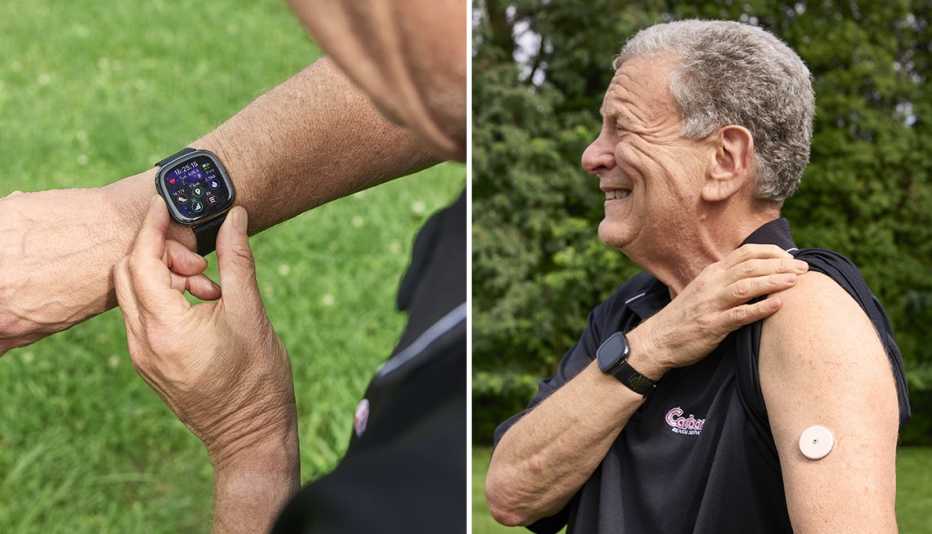AARP Hearing Center


Diagnosed with type 2 diabetes in 2004, Andy Pincus has made some radical changes. He’s lost 52 pounds, walks more than 15,000 steps a day and eats a more plant-based diet.
This year, Medicare expanded coverage for continuous glucose monitors (CGM), making it significantly easier for Pincus, 70, and millions of others to manage their blood sugar levels. Once used mostly for insulin-dependent type 1 diabetes, CGMs are rising fastest among people like Pincus with type 2 who typically take oral medications and may use injectable drugs, sometimes along with insulin, to control blood sugar.
High-tech help for blood sugar control
To better manage his diabetes, Pincus wears a patch with a glucose sensor on his upper arm that transmits blood sugar (glucose) data to his smartphone. “I take readings several times during the day. When I see spikes and valleys, I think about what I ate that caused that. I’ve lost weight, and my A1c [a 90-day blood sugar average] is lower.”
Experts estimate the Medicare rule change makes 1.5 million more older adults eligible for the devices, many with type 2; if private insurance plans follow suit, an additional 2.5 million people, almost all with type 2, will have insurance coverage. The change is one reason analysts say that by 2027, at least 5.9 million people with type 2 diabetes will be eligible for insurance-covered CGMs. That could grow to 8.4 million if private insurers also expand coverage. “This is great news for patients with type 2 diabetes,” says Tamara Oser, M.D., who studies CGM devices at the University of Colorado Anschutz Medical Campus in Aurora.
Compared with finger-stick blood sugar checks, CGM devices help midlife and older adults lower their blood sugar further and keep it in a healthy range longer. In Oser’s recent pilot study that used CGMs with a lifestyle guide and Fitbit, 67 percent of newly diagnosed type 2 patients obtained diabetes remission. Oser is also testing CGMs in prediabetes, which almost 64 million midlife and older Americans have.
Pincus has used his CGM to see how certain foods, as well as sleep and stress, affect his glucose levels. “CGM has the ability to change lives,” he says.
More Diabetes Breakthroughs
App helps you stay on track
A prescription-only smartphone app, which uses cognitive behavioral therapy techniques to help people with diabetes develop new habits, received FDA authorization in July. People using the AspyreRx app for 90 days saw their A1c, a measure of long-term blood sugar control, fall significantly.
Diabetes drug sparks weight loss
In May 2022, the FDA approved tirzepatide (Mounjaro), an injectable diabetes medication that activates receptors on cells for glucose-controlling hormones. The drug also helps with weight loss; after approval, some dosages were in short supply as people with and without diabetes flocked to fill prescriptions.
On the horizon
Artificial pancreas for type 2 diabetes
In January 2023, a small British study showed that an experimental “artificial pancreas” — a device that measures blood sugar continually and releases insulin into the bloodstream as needed — was more successful at lowering blood sugar than standard insulin injections for adults with advanced type 2 diabetes. Researchers say larger studies are needed to fully test the device.



































































More on Health
Can Supplements Help Lower Blood Sugar?
Although there is some interesting research, the science isn’t clear
Who Really Needs a Continuous Glucose Monitor?
The wearable tech is proven effective for diabetes management but not for prevention, doctors say5 Reasons You Should Lower Your Blood Sugar
If you have prediabetes, the sooner you make this a priority, the better the payoff and the longer you could live